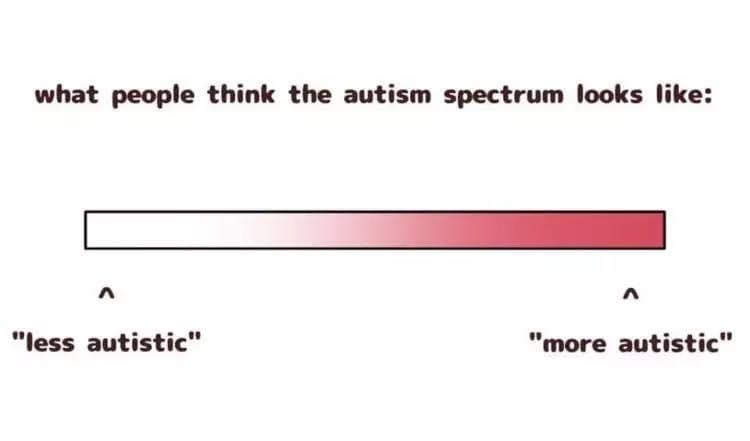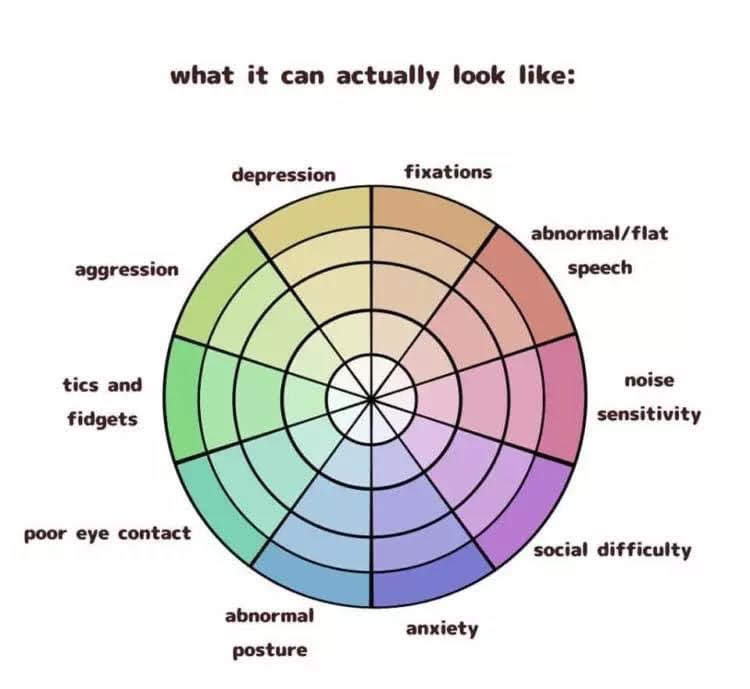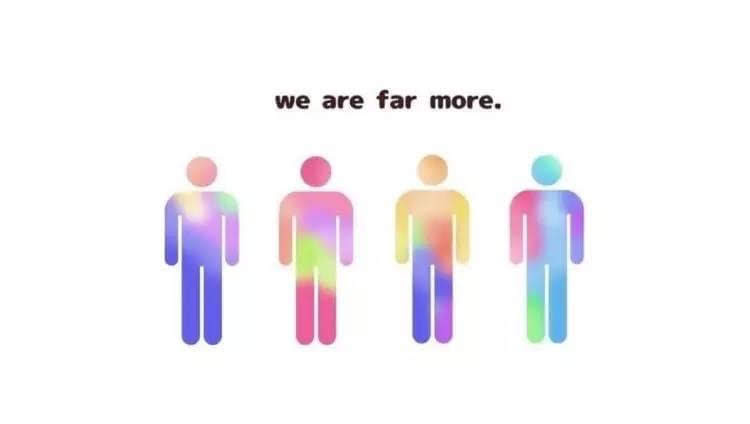Alright my faithful readers, since we are approaching the end of Autism Awareness Month, I felt compelled to share some important information through a few images that are particularly helpful when trying to understand those living with Autism. First, the image that we all believe to be true:

I admit, before Autism became a part of my life, I believed this image to be accurate. If the Autism spectrum truly presented in this way, then Clara would be very much toward the white end in terms of how others experience her. At the age of two, she was practically nonverbal but now, she’s quite the opposite! Anyone who knows her knows that she can babble on and on. As my mother said to me the other day, be careful what you wish for! There were months that went into her speech, coaching her to simply say the word “milk” instead of hanging off of the refrigerator handle, grunting and screaming. We wished, hoped and prayed that she would speak, that she would find her words, that she would find a way to communicate her needs and wants with us. Flash forward to being quarantined with her: she never shuts up. I love her and don’t get me wrong, I am incredibly proud that she is finally here, but She. Seriously. Never. Shuts. Up. Mom, I have a good idea. I do gymnastics and you watch and then I tip this chair and make a fort and you help and then I CLIMB and JUMP and then I FLYY like a superpower. Okay, you watch me now. Wait. I need a cape. Help me find a cape. Tie the cape okay? No not like that, like this. Long like Elsa. My hair is long like (Ra)Punzel. I’m more hungry and thirsty and I want milk and gummies please Mom? You get the picture… She speaks. A lot. And she expresses her needs and wants, probably more often than she actually should. She’s compassionate, too. She recognizes others’ feelings and tries to find a way to help them. As many of you know, I attribute these traits to the immense amount of work she has done through therapy, but ultimately there is no denying that she is in a very good place right now. To the outside world, she is definitely “less autistic.” But then, there’s the real spectrum:

The meaning behind the different shades of color on this diagram differ depending on how one reads the image, but either way, you can see that there are varying levels of how a person with Autism can be affected by certain things. Just because a person falls in the dark purple of anxiety doesn’t mean that person also suffers from the dark yellow of depression. People with Autism display varying shades of color throughout the whole circle. At first, Clara’s colors were all rather dark, and what I mean by that is she presented quite seriously with many of these symptoms. The most present, in my opinion, was the orange indicator of abnormal speech. As we continued to explore her world, we realized that she was also quite dark teal because she rarely made eye contact. Magenta also ran its way through her life as she struggled to make peer connections. A tip toe walker from the beginning, green trickled in. At first, that was Clara’s rainbow: dark orange, teal, magenta, and green. As we worked to lighten these shades through services and experiences, pink quickly joined the club. Clara developed sensitivities to noise that would often result in complete meltdowns: the vacuum, any kind of hand dryer in a public restroom, power tools of all sorts, hairdryers, sometimes the bark of a dog, and even the car wash.
It’s hard to tell how dark the shades of Clara’s rainbow are these days, mainly because she has acquired the proper skills to communicate verbally and physically, as well as how to tolerate certain things such as noise. There are times, however, that she does resort to her old ways, covering her ears and cowering in fear if she’s not expecting the sound. The thing about Autism, quite obviously, is that it’s not static. There is a significant chance that Clara is more prone to these other colors: fixations, poor posture, anxiety and/or depression, and even more. You may have skipped over the title of that second image: What it Can Actually Look Like. Can. Autism presents differently in every single person, and the spectrum that is often referred to has absolutely nothing to do with “how autistic” a person is.
Another really great resource is this comic strip. Please, if you’ve made it this far, take the time to click on that link and read Archie’s full explanation.
 Archie is a fine young comic who makes several interesting points that truly resonate, such as those of us who are neurotypical also struggle with things such as language. Those with Autism simply struggle in a different way. In the end, those with Autism while perhaps are different, are certainly not less. In fact, I would argue that they’re even more. Clara is a dynamic little girl who has worked far harder than I ever had to in order to be where she is today. I can’t quite remember what it was like to be three, but I know I wasn’t drilled on how to make proper eye contact and correctly form my plurals several times a week. Clara is just one beautiful example of the diagnosis and why the last image is perhaps my favorite:
Archie is a fine young comic who makes several interesting points that truly resonate, such as those of us who are neurotypical also struggle with things such as language. Those with Autism simply struggle in a different way. In the end, those with Autism while perhaps are different, are certainly not less. In fact, I would argue that they’re even more. Clara is a dynamic little girl who has worked far harder than I ever had to in order to be where she is today. I can’t quite remember what it was like to be three, but I know I wasn’t drilled on how to make proper eye contact and correctly form my plurals several times a week. Clara is just one beautiful example of the diagnosis and why the last image is perhaps my favorite:

So, you wonder what you can do? Share this information. Share the link to the comic strip. Show these images to your chldren, your nephews and nieces, your colleagues. Talk about the Autism Spectrum with the knowledge you have gained here. And when you meet someone with Autism, be compassionate and understanding. Try to learn how certain things like crowded social settings or their special areas of interest impact them, and accommodate as needed. I assure you that you’ll be happy you did, because you might just end up with a friend who’s even half as cool as Clara.



